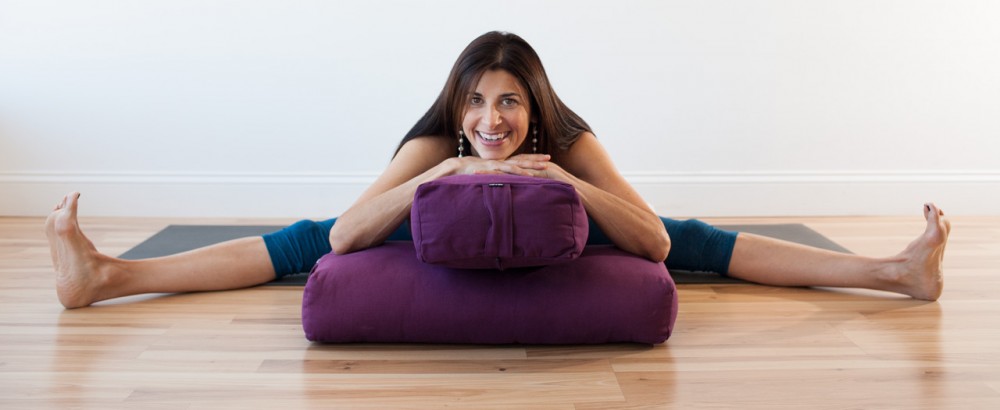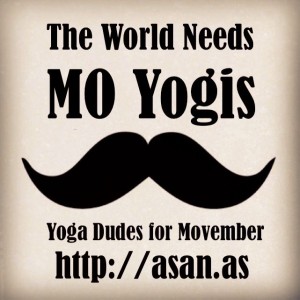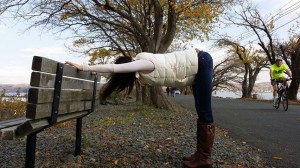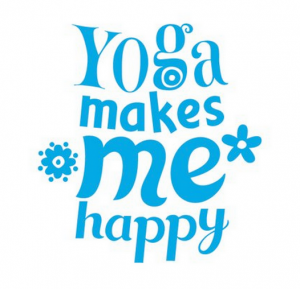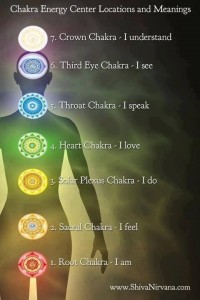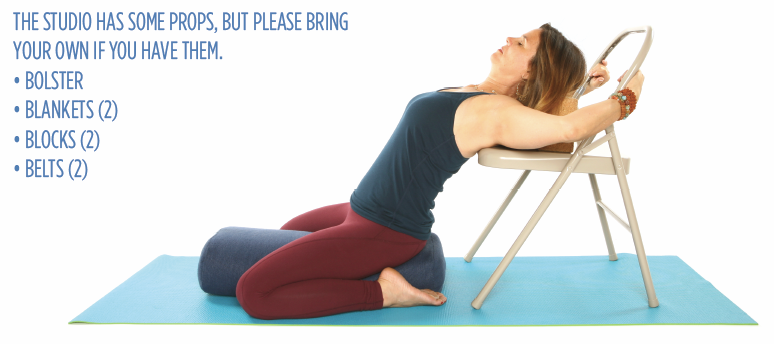Category Archives: Yoga as Therapy
can’t you ever relax ?
True we always seem to be “doing” ! It is easy to start a relaxation practice.
Nurture the “being” aspect through Restorative Yoga Therapy 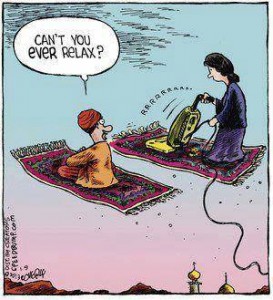
remover of obstacles
starting a new endeavor ? Meditate on the symbolism
november movember
Yoga break
It literally just takes a minute to refresh oneself! Check out a fun way to include half downward facing dog into a walk outdoors or try it against the wall after you have been sitting at your computer… minutes add up to magic, even if you only have a few..and my 5 minute mindfulness retreat will set your focus on “calm” …
yoga makes me happy
Very balanced practice today! What yoga poses cheer you up?
Chakra rebalancing
Is your emotional energy out of whack? Try the Chakra Re-balance Meditation
Yoga Therapy: It’s Not Just “Gentle” Yoga
my latest on yoga therapy posted on MindBodyGreen

The word “therapy” has become a buzzword in yoga. When I tell people I’m a yoga therapist, some teachers ask me what it means, and I’ve had students scrunch up their faces.
Truth be told, 20 years ago we used to speak about yoga as “alternative medicine,” and some teachers who realized yoga wasn’t just a one-size-fits-all treatment started to teach private sessions to address the unique needs and concerns of individuals.
Despite yoga’s popularity today, there’s still a need to educate people about what yoga therapy is. Here are seven things everyone should know:
1. There’s a difference between “gentle yoga” and “yoga therapy.”
“Gentle” yoga seems to imply the pace or level of class as it compares to fast paced vinyasa. Doing a slow Warrior 2 as part of a “take it slow sun salutation” class is different from doing a 90-second Warrior 2, holding a block on the outer hip of the bent leg side against a wall in order to encourage external rotation of the hip. Try it. See if it informs your pigeon pose and then see what you need to do in pigeon to have the pose actually benefit you.
Sometimes students tell me that my class was super challenging because it got them to move underworked areas, and yet super uplifting because they experienced a deeper ease by actively restoring energy to overworked areas.
2. Yoga therapy in a private setting will assess each person holistically.
In yoga therapy, we’re looking at the person behind the posture; we’re teaching a skill rather than cue-ing a pose. For example, to cue everyone to “tuck the tailbone” will not be informative for the student who already walks around like that. Rather, teach students the skill necessary to find their neutral pelvis. This means that in a class of 10 people, you’d see 10 variations or modifications.
3. Yoga therapy is often a better option for people with injuries.
Any given practice can be healing for you, neutral, or harmful. Yes, yoga is intended to bring you into symmetry and balance, but who are you? I’ve spoken with many people who LOVE their classes but still struggle with neck pain. Why? Yoga heals, so maybe their practice is at neutral. Someone recently about a love for flow class, but this person has sciatica. Is there an absence of joint stability in the practice making it energizing-slash-harmful? Then there are people I see who are able to get stronger by learning certain postural skills, and other practices so they feel better off the mat as well.
4. A yoga therapist sees you as multi-layered.
As yoga teachers, we take an unwritten oath to convey yoga safely to our students. Today there are many trainings which take this up a notch, with information on how to use all the practices of yoga to create a purposeful plan for each individual, depending on upon his or her needs. Take pranayama, for example. Teaching the breath is an art in itself. There are practices that energize, calm, and balance. If you are a menopausal woman suffering from hot flashes and you go to a rigorous group class with heating breathing practices, chances are, this will not balance you. So was this really therapeutic for you?
5. Yoga therapy doesn’t sacrifice form for flexibility or for a faster pace.
In yoga therapy, hold times matter. In his book Yoga for Osteoperosis, Dr. Loren Fishman explains that “bone-forming proteins seem to synthesize quite well after 10 seconds of stimulating pressure.” What this means is that if you’re hoping to build stronger bones, you’ll want to hold a pose for more than a breath. He recommends holding a pose anywhere between 8 and 72 seconds. In yoga therapy, you have the opportunity to explore correct alignment for your body with a calm breath, listening to your body to discover what works for you.
6. In yoga therapy, relaxation and restoratives are not bad words.
Relaxation is a discipline in and of itself. Just as we need to shut down a computer so that it can run all the software, the nervous system needs rest and recovery. As for restorative postures, we don’t necessary spend the entire class on them but we might. And if we do, just because you aren’t down-dogging does not mean nothing is happening. Think of these poses as supported recovery, whether you’re an active athlete, a desk jockey, or a busy mom. Flexibility can happen through allowing rather than forcing.
7. We use props to help you heal.
Props matter to us, not to make it “easier,” but to meet your needs, which makes the asana therapeutic. That or we give you another pose. It’s all part of a prescription for your wellness. It also may help with staying safe.
Using time on the mat to open to who you actually are gives great feedback to your mind, body, spirit. This shift in perception will transform your practice into a truly therapeutic one, which is ultimately healing for you.
Photo Credit: Shutterstock.com
Yapana® Yoga Workshop in Montreal Sunday November 24th
Yoga Workshop: An Introduction and Practice to Yapana® Restorative Yoga Therapy for Students and Teachers.
Sunday, November 24th, 10:00AM – 12:30PM
H-OM Yoga Center * Promenade Hudson Mall
HWY 40 & Harwood * Vaudreuil-Dorion * Exit #28 (Hudson/St. Lazare)
450.732.1707 * $30 * Please Call to Reserve Your Space!
The first hour will focus on identifying where and how our bodies respond to force in yoga poses without yoga props. Based on our discoveries, we’ll follow with a restorative yoga therapy practice that provides strategic prop support in poses that mimic classic standing, back bending, twisting, forward bending, and inverting while meeting individual needs and a thematic purpose.
 Rana Waxman is a Yapana® certified teacher, and has been specializing in yoga therapy for 20 years. Her inspired style is informed by an extensive background in bodywork , and she has been called the “muscle whiperer”. Rana has led workshops internationally, created and hosted her own Yoga TV Show, produced the YogaMind CD, and is well-known for her contributions to MindBodyGreen and the Elephant Journal.
Rana Waxman is a Yapana® certified teacher, and has been specializing in yoga therapy for 20 years. Her inspired style is informed by an extensive background in bodywork , and she has been called the “muscle whiperer”. Rana has led workshops internationally, created and hosted her own Yoga TV Show, produced the YogaMind CD, and is well-known for her contributions to MindBodyGreen and the Elephant Journal.
LeeannCareyYoga.com
#Yapana® #Yoga Workshop in #Montreal Sunday November 24th http://t.co/fzJmDNikbI via @yoginiqueen
— Josepf Haslam (@Josepf) October 23, 2013
intention, intention
Intention, attention, let go in your meditation
yoga clarifies and teaches you how to form an intention and nurture it with attention then allow nature to take its course
